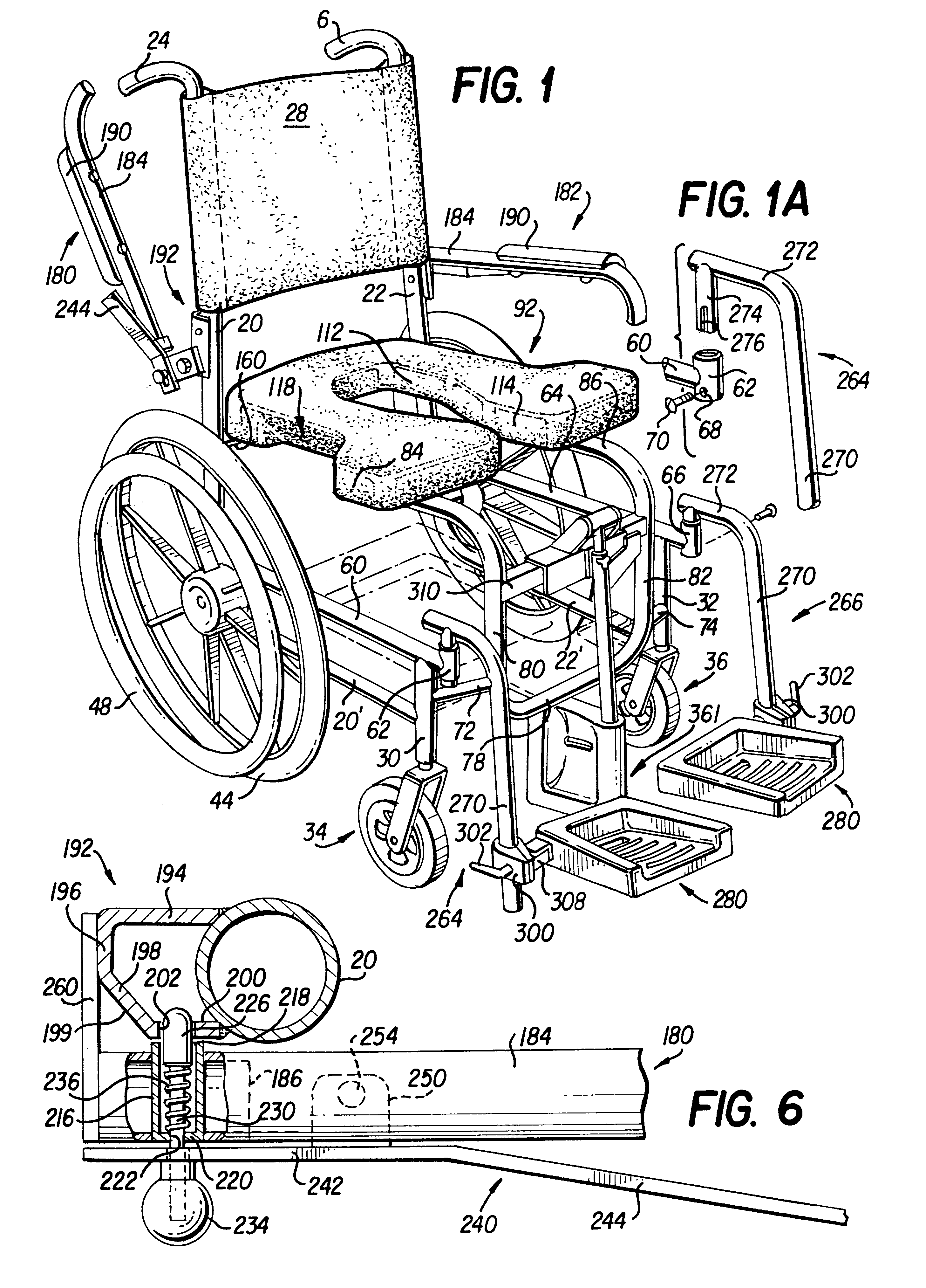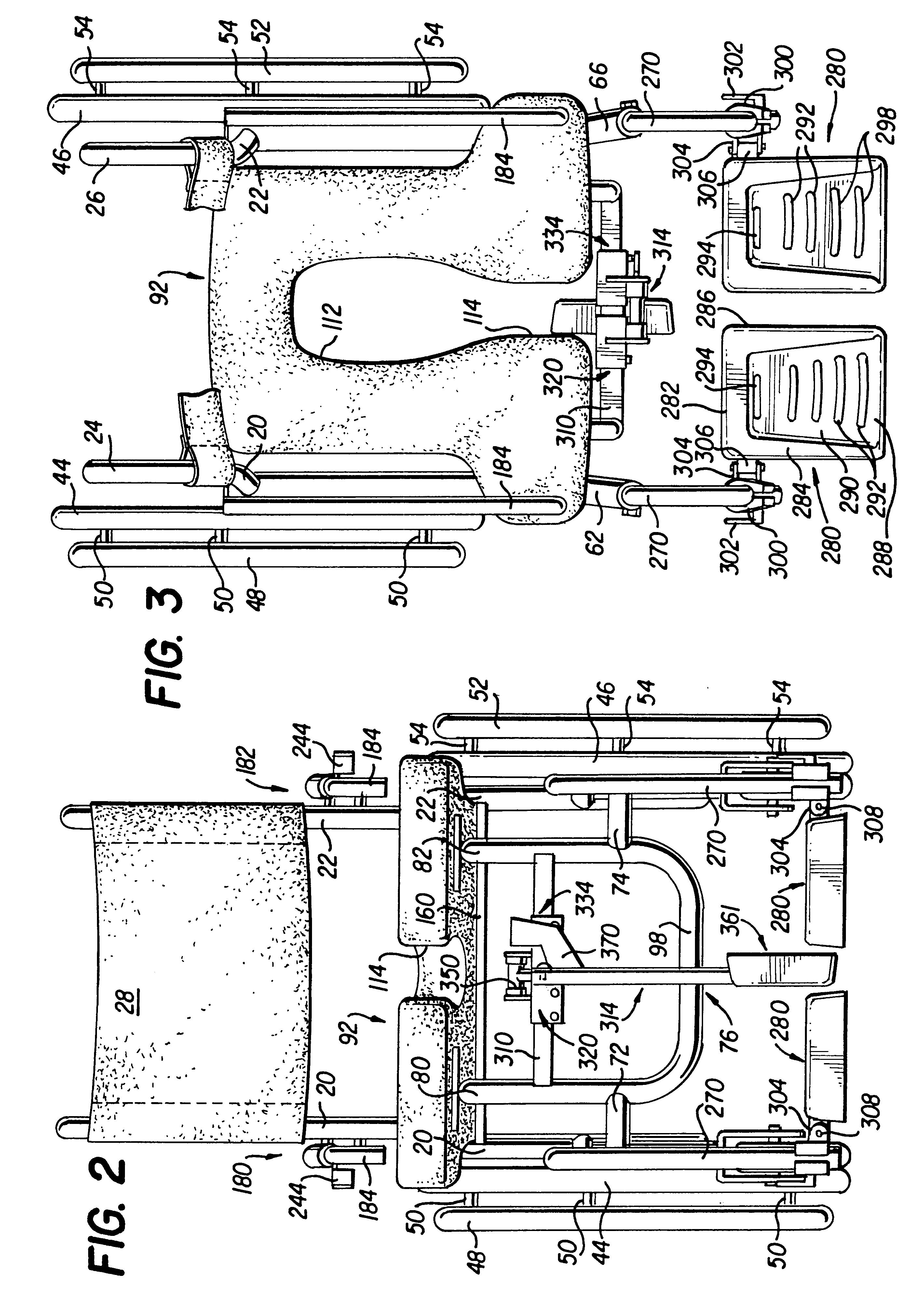Advanced commode-shower wheelchair
a commode-shower wheelchair and advanced technology, applied in the field of wheelchairs, can solve the problems of unsatisfactory seats of prior-art wheelchairs, difficult for patients to wash their legs and feet, and insufficient under-seat access, so as to facilitate lateral transfer of patients, prevent skin pinching, and facilitate the effect of patient wash
- Summary
- Abstract
- Description
- Claims
- Application Information
AI Technical Summary
Benefits of technology
Problems solved by technology
Method used
Image
Examples
Embodiment Construction
Referring now to the drawings wherein like reference characters designate corresponding parts throughout the several views, there is shown in FIGS. 1-4 inclusive the wheelchair which includes a frame formed of tubular members formed of metal such as aluminum having a circular cross-section so that they can be easily grasped by a user and further so that large rounded edges are provided to prevent cutting the bare skin while showering. The frame includes at the rear portions thereof a pair of spaced frame members 20 and 22 which have free ends 24 and 26 respectively which angle downwardly away from the chair to facilitate pushing of the chair by a person other than the user. A back support 28 comprises a flexible sheet of material formed of an open mesh fabric that allows water to flow therethrough during showering. The opposite side edges of the back support are turned over and stitched to the body of the back support to form two tubular sleeve portions at the opposite edge portions...
PUM
 Login to View More
Login to View More Abstract
Description
Claims
Application Information
 Login to View More
Login to View More - R&D
- Intellectual Property
- Life Sciences
- Materials
- Tech Scout
- Unparalleled Data Quality
- Higher Quality Content
- 60% Fewer Hallucinations
Browse by: Latest US Patents, China's latest patents, Technical Efficacy Thesaurus, Application Domain, Technology Topic, Popular Technical Reports.
© 2025 PatSnap. All rights reserved.Legal|Privacy policy|Modern Slavery Act Transparency Statement|Sitemap|About US| Contact US: help@patsnap.com



